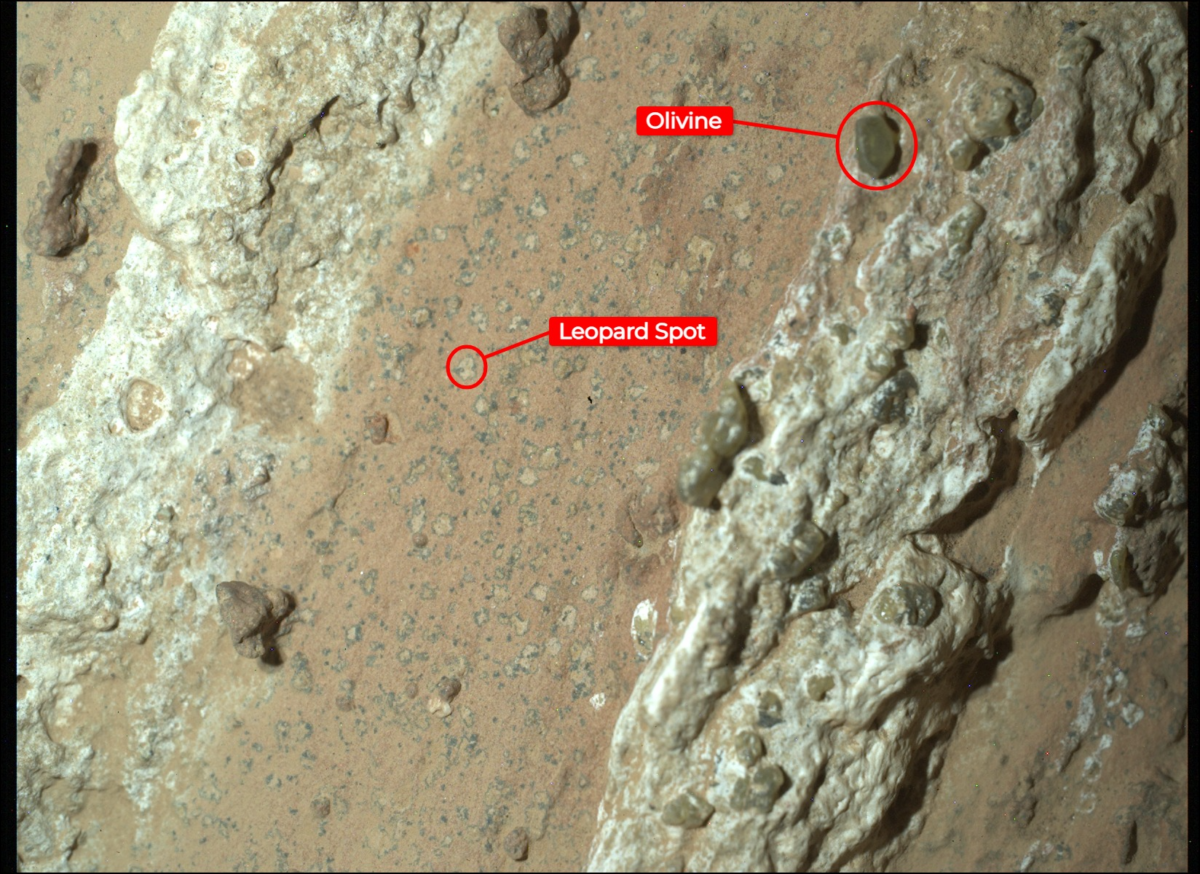The “leopard spot” features contained in the Cheyava Falls rock are often associated with fossilized microbes on Earth, but they are still far from solid evidence of life on Mars.

The Perseverance rover found potential evidence of microscopic life in Mars' distant past inside this rock, called Cheyava Falls. Credit: NASA/JPL-Caltech/MSSS
NASA's Perseverance rover, operating on Mars since February 2021, recently found a large rock containing organic compounds that could have been microscopic life in the distant past. The results are still uncertain, so scientists aren't ready to proclaim that life once existed on the Red Planet. The discovery came when the rover's SHERLOC (Scanning Habitable Environments with Raman & Luminescence for Organics & Chemicals) instrument scanned material from the rock.
The science team named the rock Cheyava Falls, after a waterfall in Earth’s Grand Canyon. Perseverance found it at the northern edge of Neretva Vallis, an ancient river valley that emptied into Jezero Crater billions of years ago. The rock measures 1 meter by 0.6 meters (3.2 feet by 2 feet). The rover collected a sample of it on July 21.
Ancient leopard spots
“Cheyava Falls is the most puzzling, complex, and potentially important rock investigated so far by Perseverance,” said Ken Farley, Perseverance project scientist at Caltech in Pasadena, in a Press release“On the one hand, we have detected organic material for the first time, distinctively colored patches indicating chemical reactions that microbial life could use as an energy source, and clear evidence that water, necessary for life, once passed through the rock. On the other hand, we have not been able to determine exactly how the rock was formed and to what extent nearby rocks may have heated Cheyava Falls and contributed to these features.”
The interior of Cheyava Falls features large white veins of calcium sulfate separated by bands containing hematite, one of the minerals that gives the Red Planet its distinctive color. Perseverance also found dozens of tiny whitish spots, each surrounded by black, that look reminiscent of a leopard’s spots. The rover’s Planetary Instrument for X-ray Lithochemistry (PIXL) found that the black material contains iron and phosphate.
“These stains are a big surprise,” said David Flannery, an astrobiologist and member of the Perseverance science team at Queensland University of Technology in Australia. “On Earth, these kinds of features in rocks are typically associated with the fossilized record of microbes living in the subsurface.”
The Perseverance science team believes Cheyava Falls may have been mud with organic compounds mixed in that eventually turned into rock. The fluid later soaked into the rock, creating the calcium sulfate veins seen today and giving rise to the stains.
Answers remain elusive
“We’ve shot lasers and X-rays at that rock and imaged it literally day and night from almost every angle imaginable,” Farley said. “Scientifically, Perseverance has nothing else to offer. To fully understand what really happened in that Martian river valley in Jezero Crater billions of years ago, we would want to bring the Cheyava Falls sample back to Earth, so we could study it with the powerful instruments available in the labs.”
“We designed Perseverance’s route to ensure it hits areas with potential to return interesting science samples,” said Nicola Fox, associate administrator for the Science Mission Directorate at NASA Headquarters in Washington, D.C. “This trip across the Neretva Vallis riverbed was worthwhile because we found something we’d never seen before, which will give our scientists plenty to study.”